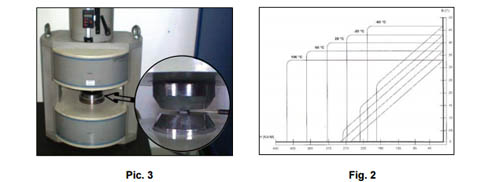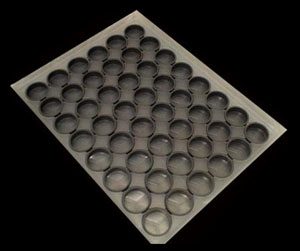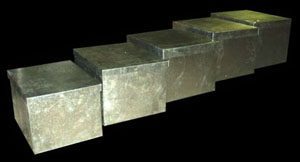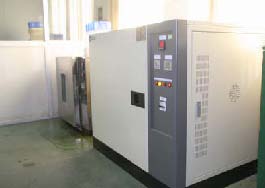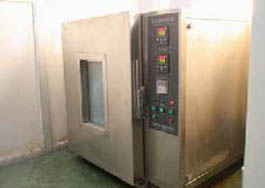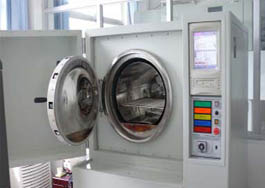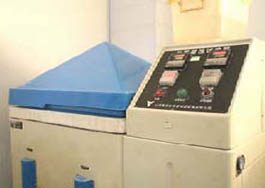Quality Assurance
Quality Assurance
At Alliance LLC we are focused on providing our customers with the highest quality permanent magnet products in the industry. We are continually making improvements to our facilities, systems and procedures in order to stay ahead of industry standards.
Our facilities are equipped with state-of-the-art technology to properly test all our materials and all of our group companies use standards such as Six Sigma, Lean Manufacturing, and Total Quality Management. Each and every supplier within the Alliance LLC group of companies is certified under ISO9001 or TS16949 standards.
As a commitment to our environment, we have implemented a program under which our suppliers are now certified and comply with ISO14001 Environmental Standards.
Permanent Magnet Testing Methods and Procedures
Flux Density Test (Gaussmeter)
The surface flux density, or the flux density at a certain distance from the magnet can be obtained using a Gaussmeter and an Axial or Transverse probe. The probes contain a Hall Effect device whose output voltage is proportional to the flux density. Figures 1a and 1b show the placement and direction of testing when using the two types of probes. Gaussmeter measurements provide an accurate and easily calibrated value for flux density (Gauss or Tesla) in a very specific location. However, the position of the probe in relation to the magnet must be in exactly the same place for each sample. Brass fixtures are commonly used for locating the probe to the sample being tested. Calibration is obtained by using a Zero Gauss chamber or a magnet sample with a known flux density value. It is important to note that this method obtains a surface flux density reading in Gauss which is different than the Gauss number specified as the Intrinsic Residual Induction, Br.
Total Flux Test (Fluxmeter)
The total flux output of a magnet can be obtained using a Fluxmeter connected to a Helmholtz coil. As shown in pic. 1, the coil is actually a pair of coils with a known number of turns and at a certain distance from each other. The resulting data (mVs, Weber, Maxwells) can be interpolated to obtain an approximate value for Br or Bdi. When designing or purchasing a Helmholtz coil it is important to know the approximate size of the magnet being tested. The coil diameter should be at least three times the largest dimension of the magnet and the spacing between the two coils should be equal to their radius. Another important factor is to know the coil constant. This, along with knowledge of the magnet volume, can be used to determine Br and other magnetic values.
The test procedure is very simple. A magnet is placed mid-space inside the coils and is pulled out so that the lines of flux from the magnet erpendicularly cross through the plane of one coil. The connected Fluxmeter (pic. 2) will measure the induced voltage and provide data in mVs, Webers, or Maxwells. Newer Fluxmeters allow users to input the magnet volume and thus provide results in Tesla.
Although the procedure is simple and results are highly repeatable, the operator must undertake certain steps:
1. Fluxmeters must be de-drifted. Although this is done by simply activating the unit’s de-drift feature, the process can take from 10 to 30 minutes.
2. The magnet must be pulled out of the coil so that its magnetic rientation is perpendicular to the plane of the coil.
3. The Helmholtz Coil must be located for minimal outside magnetic interference. It is advisable to keep magnets at a proper distance from the coil and to avoid placing it on a metal surface.
Hysteresis Test (Permeameter)
Hysteresis curves, also called B-H curves, describe the Intrinsic and Normal magnetic properties of a material. This test can be performed at various temperatures. The equipment is comprised of a DC Magnetizer and a Fluxmeter connected to a Search Coil. Of the various tests for magnetic materials, this is one of the most expensive because the sample material must be machined to a precise dimension, usually a cube, and a search coil is then wound around the sample. The sample is then placed between two large pole pieces which create a closed loop system (pic. 3). A DC magnetizer cycles the sample from origin to saturation, to complete demagnetization, to saturation in the opposite direction, and finally back to the original saturation level. The fluxmeter continuously records B and H and, via special software, provides a B-H or Hysteresis Curve (fig. 2). This data is commonly seen in supplier catalogs as a second quadrant curve showing Br, Hc, Hci and BH(max). The test is normally performed by the magnet manufacturer during the initial stage of processing. Because of the lengthy process, it is not practical to perform the test on large numbers of finished parts. Instead, it is common to have one B-H curve supplied with each lot of parts.
Permanent Magnet Packaging For Transport and Storage
Magnet Spacer Selection
Spacers should be at least ½ of the magnet thickness Material should be non magnetic and non abrasive.
Spacer Design
For production size quantities, a custom molded design will prevent slippage during transport and help provide for safer unpacking. Mold fees are generally under $1,000 and are waived in certain circumstances.
Packaging Non Magnetized Parts
Bulk packing of Epoxy coated magnets is not recommended. Custom molded trays are available with low to no tooling costs. Non-Static plastic trays are also available.
Packaging Magnetized Parts
If the parts cannot be individually packaged, the next best method is to arrange small quantities of magnets, along with plastic spacers, in sealed boxes with proper spacing inside of a larger cardboard box.
Transporting Magnets via Air Cargo or DHL
Magnetized materials must comply to worldwide IATA regulations for safe transport. This means the magnetic field must be reduced to almost zero on the surface of the outer box containing magnetized materials.
To achieve this, magnets should be arranged to form a closed magnetic circuit and should be packaged in metal containers in order to reduce the range of the magnetic field outside the box. For larger magnets, it may be necessary to form a shielding system of several metal boxes which are placed one inside the other along with a certain gap between them.
Generally when shielding with metal containers, the total weight of the shielding material will approximately equal the weight of the magnets being shipped. Therefore, this added weight should be considered when receiving quotes for air shipping magnetized materials.




